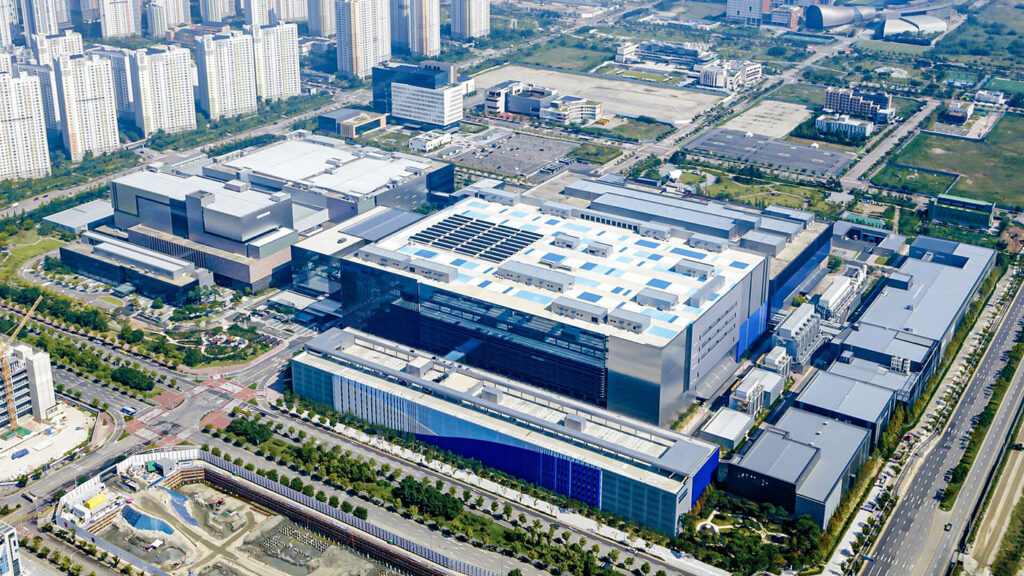The global capacity squeeze in the biomanufacturing sector is intensifying. While innovation in biologics continues apace, with an expanding portfolio of complex modalities, the available infrastructure has become increasingly limited, constraining both clinical and commercial pipelines.
Rising complexity and demand

Executive Vice President
Head of Operations
Samsung Biologics
The core issue is the escalating demand for both conventional and advanced biologics—monoclonal antibodies (mAbs), bispecific and multispecific antibodies (bsAbs/msAbs), and antibody-drug conjugates (ADCs)—which require tailored yet versatile manufacturing capabilities. These modalities are no longer fringe elements of the pipeline but are becoming central to therapeutic strategies. Their structural and production complexities, however, can exceed the capabilities of legacy facilities.
Global contract development and manufacturing organizations (CDMOs) are operating at close to full capacity and are, in many cases, prioritizing high-volume commercial manufacturing contracts. As a result, manufacturing slots for clinical or early-stage development programs, especially those involving niche or emerging modalities, are limited.
The mismatch between supply and demand is further exacerbated by the fact that only a few facilities are built for complex biologics. Facilities capable of implementing ADC or msAb manufacturing are often booked months or even years in advance. Developers of early-phase programs often face obstacles in securing manufacturing slots at the right time because timing is critical to maintain momentum, acquire funding, and preserve a competitive edge.
The supply and demand gap
Several distinct trends are converging to reduce availability across the board, resulting in a capacity squeeze. One major contributor is the growing need for bespoke facilities. Some advanced biologics, especially ADCs, involve raw materials or solvents that pose significant handling risks, including the potential generation of explosive byproducts. Anti-explosion process designs for mitigating such risks limit the reusability of facilities or their adaptability across multiple programs.
Multispecific antibodies bring their own technical challenges. Combining two or more antibody fragments can create stability issues, complicating downstream process design and quality control. To ensure product quality and offset the risk of complications, CDMOs need to develop more robust analytical methods and rigorous process validation protocols.
The shift toward complex biologics is accompanied by more stringent quality requirements. Regulatory expectations for data compliance, traceability, and reproducibility continue to rise, while the underlying technology platforms evolve. The gap is no longer only about physical capacity but also about digitalization and operational excellence.
Timelines under pressure
Capacity limitations are creating mounting pressure on biopharmaceutical companies. For small- and mid-sized biotechnology companies, the impact is particularly pronounced. Without establishing long-term contracts or partnering with CDMOs to reserve capacity well in advance, these companies are often left to navigate the bottom of the capacity hierarchy.
Early-phase programs for ADCs or msAbs, in particular, are being delayed due to an inability to secure timely GMP manufacturing. In some cases, this has resulted in missed clinical trial timelines or delayed filings for investigational new drug (IND) applications. These are not just inconveniences but existential threats to venture-backed companies with fixed funding timelines and competitive therapeutic targets.
Larger pharmaceutical companies are not immune either. The growing popularity of complex biologics has led to greater competition for production slots, longer lead times, and less flexibility in managing pipeline adjustments.
Meanwhile, CDMOs are facing their own set of trade-offs. They must balance short-term commercial priorities with long-term capacity planning. Facility expansion is a viable solution; however, construction timelines—which span approximately two to three years, and often longer—are not agile enough to align with demand forecasts. Delays in construction, permitting, or technology integration can create ripple effects across multiple clients.
Uncertainty around future manufacturing availability is a strategic variable in pipeline planning. For biopharmaceutical companies, failure to predict when and where their products will be manufactured limits their ability to allocate resources, optimize development timelines, or adapt to market shifts.
What CDMOs must do next
To counter the capacity squeeze, leading CDMOs are adopting a proactive partnership-driven model. This model goes beyond transactional agreements. Strategic partnerships must include the early and regular alignment of pipeline forecasts, facility needs, technical requirements, and process design preferences.
The goal is to derisk capacity planning before it is needed. Biopharmaceutical companies that provide advanced notice of upcoming technical requirements—such as single-use versus stainless steel, scale-up timelines, and segregated facilities—allow CDMOs to integrate these needs into facility design well in advance. In turn, CDMOs can optimize slot allocations and infrastructure investment strategies.
For ADC programs that involve five or more manufacturing steps—including antibody production, payload synthesis, linker assembly, conjugation, and drug product filling—an integrated services model is preferred. Companies are actively seeking CDMO partners that can provide end-to-end capabilities under one roof. These partnerships simplify project governance, reduce handoffs, and improve alignment across quality assurance and regulatory processes.
Strategic partnerships must be earned. Biopharmaceutical companies will only entrust their portfolios to CDMOs that have a proven track record of speeding up technology transfers, meeting quality expectations, and demonstrating flexibility under pressure.
Scaling responsibly
Scaling up capacity in a constrained market must be done without compromising quality. To achieve this, a multi-layered operational approach is required.
1. Standardization
CDMOs must embrace standardized facility and process designs to enable rapid technology transfer between sites. When plants are built using a shared architecture and workflow model, transferring programs between facilities becomes smoother and more efficient.
2. Automation and digitalization
Large-scale manufacturing must shift from manual to digital-first operations. Automation reduces human error, improves data compliance, and facilitates right-first-time production. Critical tools—such as electronic master batch records (eMBRs), digital twin process models, and real-time analytics dashboards—maintain compliance and process control in fast-paced environments.
3. Technology transfer excellence
Technology transfer remains one of the most resource-intensive and risk-prone phases of any biologics program. CDMOs must invest in cross-functional manufacturing science and technology (MSAT) teams that are embedded from early development through scale-up and commercial production. These cross-functional teams ensure continuity, reduce variation, and shorten validation cycles.
Quality-by-design principles should be in every layer of process design, supported by robust risk assessments, integrated quality assurance systems, and traceable process data. Adopting these principles is not optional but imperative. In an environment where the slightest delay has financial and competitive implications, poor technology transfer can derail the entire program.
4. Governance and communication
Finally, none of the above matters without cohesive teams or clear governance. CDMO clients need direct, reliable lines of communication with project leads. Trust is not built through slide decks. It is built through timely updates, clear escalation pathways, and responsive problem-solving.
Facility flexibility
Flexible facility design is essential to addressing the capacity squeeze. Facilities must be modular, scalable, and cross-compatible with a range of modalities and complex processes. This design encompasses flexible cleanroom configurations, plug-and-play suites, and hybrid single-use systems.
A CDMO that can rapidly convert a suite from traditional mAb to msAb processes while continuing to manufacture at speed provides significant competitive advantages. Speed-to-capacity has become a requirement.
Flexible facilities also support faster onboarding of new technologies and modalities. As therapeutic pipelines evolve, the ability to reconfigure infrastructure in months—not years—is crucial to staying relevant for client requests for proposals.
Final outlook
The global biomanufacturing capacity squeeze is a logical result of accelerated innovation that is outpacing infrastructure development. The sector must now transition from reactive slot allocation to proactive, risk-mitigated strategic partnerships.
For biopharmaceutical companies, this means identifying CDMOs that demonstrate scalable capacity, versatile facilities, operational excellence, and a track record of technical agility. For CDMOs, it means building earlier and faster, standardizing more rigorously, and integrating client perspectives deep into the capacity planning cycle.
What was once a problem of square footage is now a question of readiness. Only those who invest ahead of demand while staying lean and interoperable will be able to support the next wave of complex biologics.
Pierre Catignol is the executive vice president and Head of Operations at Samsung Biologics.



